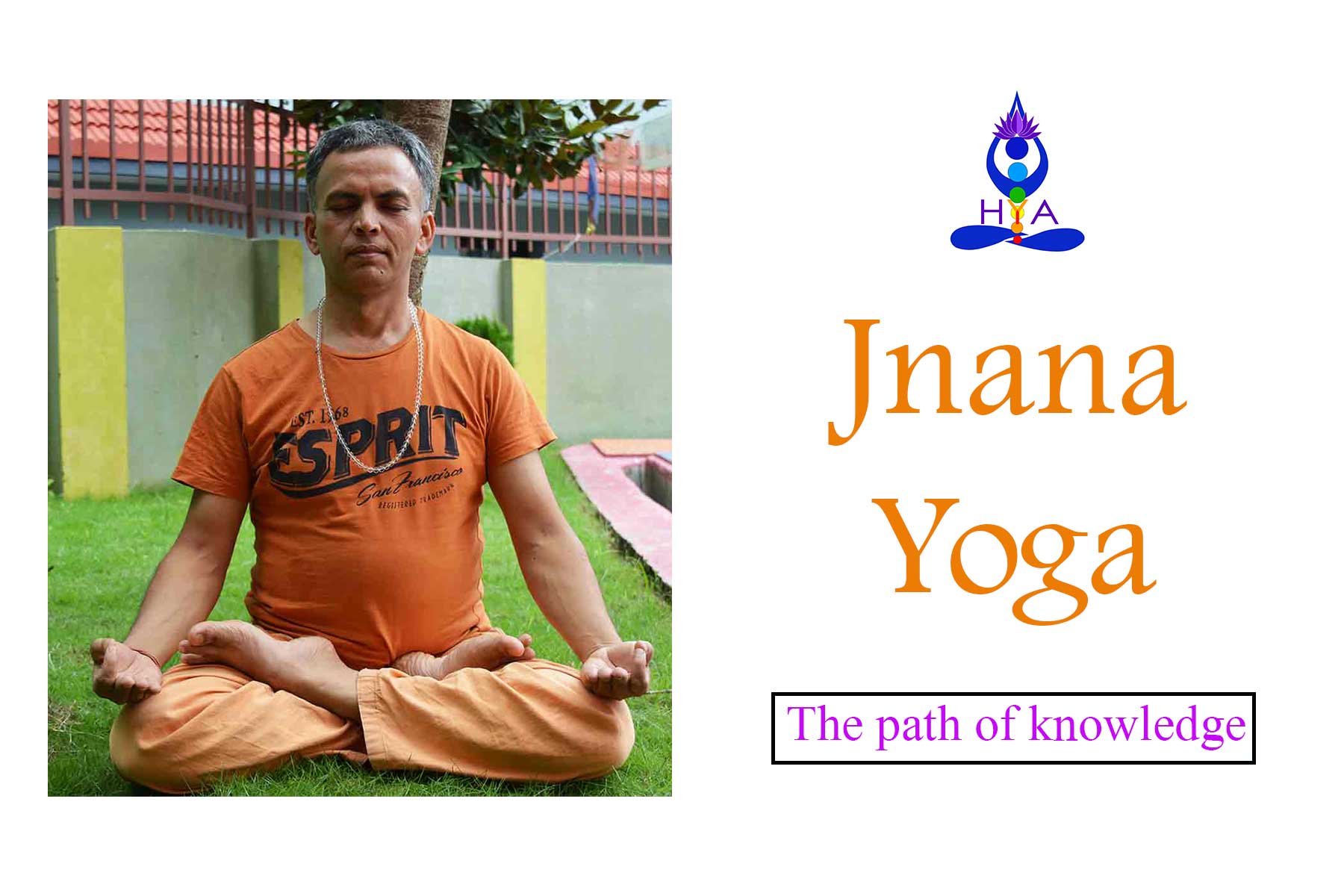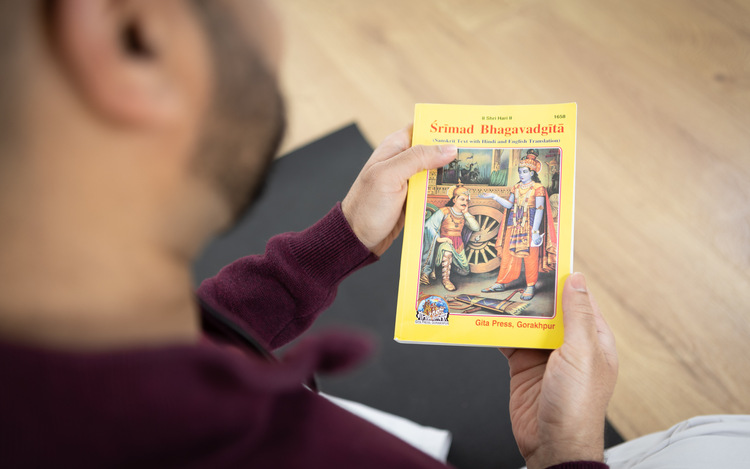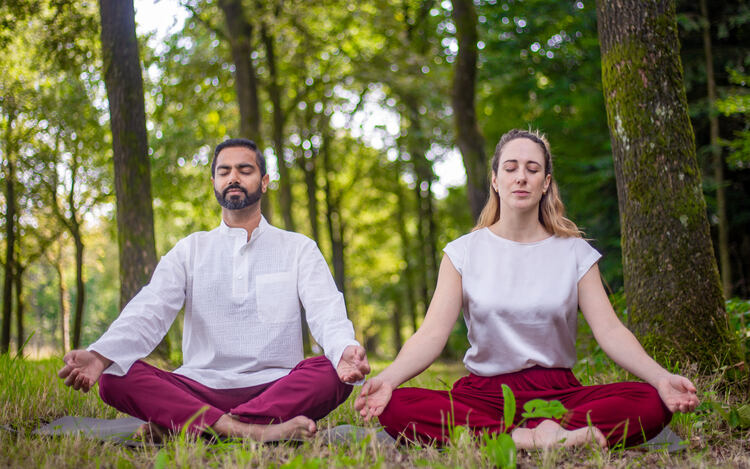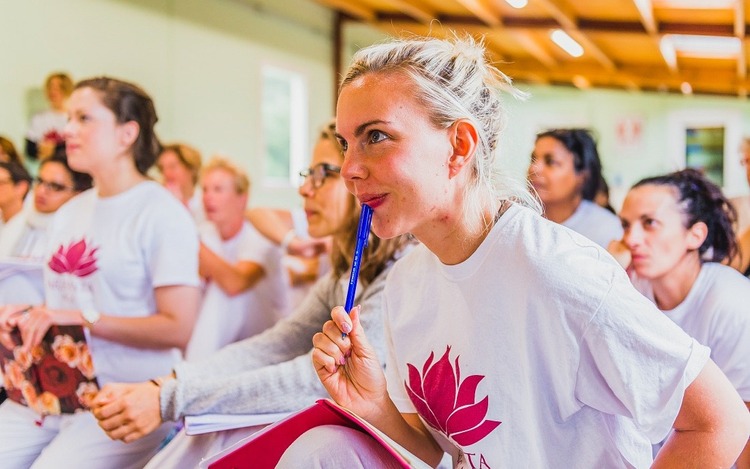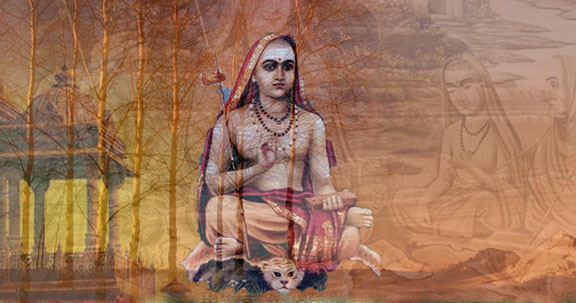Yoga started as a way to help the mind feel better and find happiness. Over time, it changed and grew, offering different ways to practice. These include Karma Yoga, which focuses on helping others, Bhakti Yoga, centered on devotion, Raja Yoga, emphasizing meditation, and Jnana Yoga, which is about understanding oneself. Jnana Yoga is seen as the toughest, needing strong determination and intelligence.

Understanding Jnana Yoga
Jnana, a term from Sanskrit, means “knowledge or wisdom.” Jnana Yoga, then, is a path toward understanding the true nature of reality through practices like meditation, self-inquiry, and contemplation. Essentially, it’s about becoming aware of the absolute consciousness.
In this practice, the mind is used to explore its own nature and rise above its identification with thoughts and ego. The main aim is to break free from the illusionary world of maya, which consists of self-limiting thoughts and perceptions, and merge the inner Self (Atman) with the universal consciousness (Brahman). This is done through consistent practice of mental techniques such as self-questioning, reflection, and conscious illumination.
Jnana Yoga relies on focused meditation on a single inquiry to peel away the layers of illusion created by our concepts, worldviews, and perceptions. This helps in realizing the temporary and illusory nature of maya and recognizing the interconnectedness of all things.
As Swami Sivananda put it, Jnana Yoga isn’t something you can grasp simply through intellectual study or reasoning; it’s a profound science that requires dedicated practice and inner exploration.
Prerequisites and Pillars
The Four Pillars of Knowledge, also known as sadhana chatushtaya, outline the essential steps toward attaining liberation in Jnana Yoga. These practices are designed to be followed sequentially and offer not only spiritual enlightenment but also alleviate suffering and discontentment in life.
Viveka (Discernment, Discrimination)
Viveka involves a consistent intellectual effort to differentiate between what is real and unreal, permanent and temporary, and the Self and not-Self. It requires ongoing analysis and introspection to develop a clear understanding of the true nature of existence.
Vairagya (Dispassion, Detachment)
Vairagya is the cultivation of non-attachment or indifference towards worldly possessions and the ego-mind. True knowledge begins to emerge when the mind is completely free from attachment to all forms of temporary desires.
Shatsampat (Six Virtues)
Shatsampat comprises six mental practices aimed at stabilizing the mind and emotions, and penetrating the illusions of maya (illusion).
Shama (Tranquility, Calmness): It involves maintaining a peaceful mind by moderating reactions to external stimuli.
Dama (Restraint, Control): Strengthening the mind to resist the influence of the senses, and training the senses to serve as instruments of the mind.
Uparati (Withdrawal, Renunciation): Abandoning activities that deviate from one’s Dharma (duty) and leading a simple lifestyle devoid of distractions.
Titiksha (Endurance, Forbearance): Enduring non-conducive situations with tolerance, especially extremes like success and failure, pleasure and pain.
Shraddha (Faith, Trust): Having unwavering faith in one’s guru, scriptures, and the path of yoga.
Samadhana (Focus, Concentration): Cultivating complete one-pointedness of the mind.
Mumukshutva (Longing, Yearning)
Mumukshutva entails an intense and passionate desire to attain liberation from suffering. It requires complete dedication to the spiritual path, with a longing so strong that all other desires fade into insignificance.
By diligently practicing these pillars, individuals can gradually advance towards spiritual insight, understanding, and ultimately liberation from the cycle of suffering.
Practice Guidelines
It can be difficult to grasp or comprehend the intellectual approach of jnana yoga, and since one can easily overemphasize intellectual attainment it is important to cultivate humility and compassion on this path. It is easy to become entangled in the constructs and thoughts of the mind and lose sight of the goal of jnana: to realize the divine oneness inherent in all beings.
It is recommended that one practice Hatha Yoga, Karma Yoga and Bhakti Yoga as prerequisites. These yogic practices will prepare and purify the body, mind, and heart for the rigors of Jnana Yoga.
Once you have attained some advancement in the other yogas, begin practicing the four pillars of knowledge. You do not need to feel you have mastered one pillar before moving on to the next, but do resist the temptation to progress forward before you are ready. This is considered an advanced practice and thus would be contraindicated for anyone with a history of mental disease or emotional instability. Working with a qualified teacher or guru is highly recommended to accurately assess your progress, offer individual instruction, and provide guidance for your progression.
Core Practices
Once you’ve mastered the foundational principles known as the four pillars, you’re ready to delve into the core practices of Jnana Yoga, a path of spiritual wisdom. These practices are based on ancient Upanishadic teachings and lead to direct realization of the self, known as Atma-Sakshatkara.
Sravana: This is all about immersing yourself in sacred knowledge found in the Upanishads, the ancient Vedic texts. Typically, a teacher or guru will guide you through discussions on non-dualistic philosophy. During this stage, you’ll deeply explore concepts like Atman (the individual soul) and Brahman (the ultimate reality), as well as the philosophy of non-duality itself.
Manana: Once you’ve absorbed this knowledge, it’s time to reflect on it deeply. Manana involves hours of contemplation on the teachings of non-duality, focusing particularly on self-study (svadhyaya) and the insights gained from sravana.
Nididhyasana: This stage calls for continuous and profound meditation on the inner self. Through nididhyasana, you concentrate on the true meanings of the Maha-Vakyas, the primary mantras or “Great Sayings” of the Upanishads. By consistently focusing on these seeds of wisdom, you aim to unite your thoughts and actions, bridging the gap between knowing and being.
The Power of Maha-Vakyas
The Sanskrit words “Maha” means great or mighty, and “Vakya” means a sentence or saying. In the ancient Indian scriptures called the Upanishads, there are special sayings known as the Maha-Vakyas, which are highly revered and powerful. Regular contemplation and meditation on these Maha-Vakyas have profound effects on our minds. They help purify our thoughts, encourage self-reflection, and provide deep insights, leading to elevated states of awareness.
There are four main Maha-Vakyas, each conveying a different perspective on realizing the essential oneness of all things. Despite their differences, meditating on any of these aphorisms ultimately leads to the same understanding. These Maha-Vakyas also address fundamental questions posed in Jnana Yoga, such as “Who am I?”, “What is my purpose?”, and “What is the nature of reality?” By delving into the contemplation of these sayings, one can find answers to these profound inquiries.
The Four Maha-Vakyas
Prajnanam Brahma (Meaning: Supreme consciousness is ultimate reality).
Aham Brahmasmi (Meaning: I am the supreme self).
Tat Tvam Asi (Meaning: You are that).
Ayam Atma Brahma (Meaning: The true self is ultimate reality).
The Seven Stages of Wisdom in Jnana Yoga
Swami Sivananda outlines a roadmap for spiritual progression through seven stages in Jnana Yoga:
Subheccha (good desire): At the outset, one delves into Sanskrit texts with zeal to unearth the truth. It’s crucial to cultivate dispassion towards worldly pleasures, striving for non-attachment.
Vicharana (Philosophical inquiry): This stage entails deep questioning and reflection upon the principles of non-dualism. Through contemplation, one seeks to understand the nature of reality.
Tanumanasi (Subtlety of mind): As understanding deepens, the mind refines itself to a state of subtlety, akin to a thread. External distractions fade as attention turns inward, focusing solely on self-realization.
Sattvapatti (Attainment of Light): In this phase, the world loses its grip, appearing like a mere dream. Karma begins to dissolve, and the yogi perceives all aspects of the universe with equanimity.
Asamsakti (Inner Detachment): Inner detachment sets in, accompanied by selflessness and profound states of bliss. The boundary between waking and dream states blurs, as the yogi transcends dualities.
Padartha Bhavana (Spiritual Vision): Here, the truth begins to unveil itself, and the nature of Brahman, the Ultimate Reality, becomes clear. Spiritual insights guide the practitioner towards deeper understanding.
Turiya (Supreme Freedom): The pinnacle of spiritual evolution, where one experiences supreme freedom in superconsciousness. Liberation (Moksha) is attained as the individual merges with the infinite.
[……]
Read more
